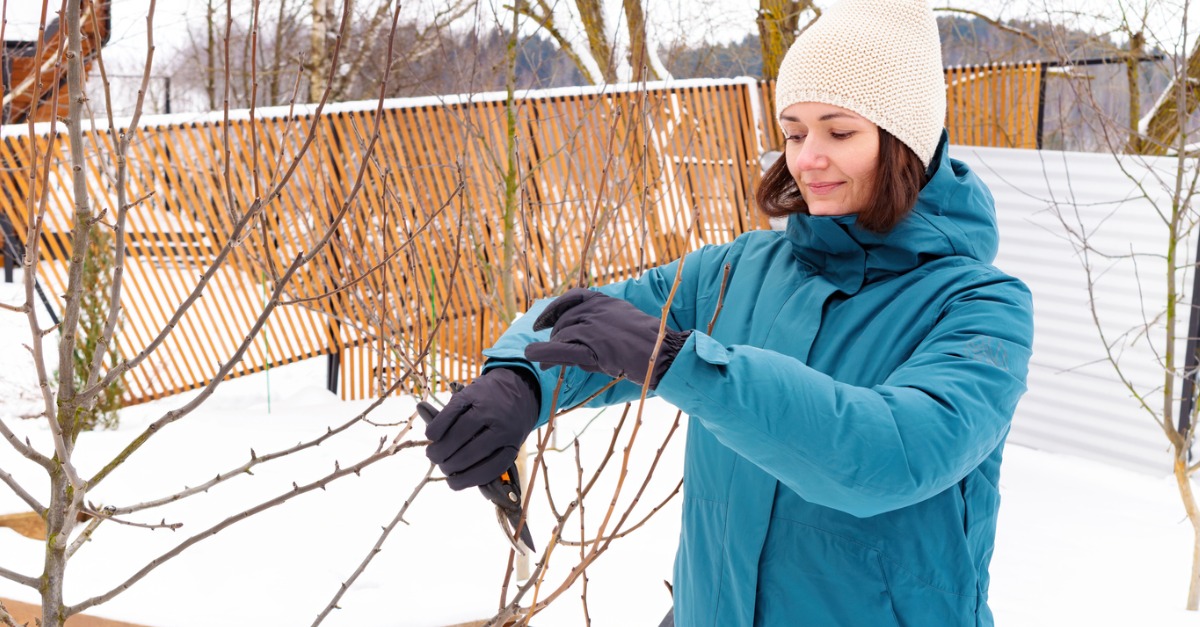Our Arborists’ Top 5 Winter Yard Care Tips
After months of maintenance, winter gives homeowners a well-deserved break from most yard care tasks. But treating your lawn to a little more TLC now can pay off come springtime. You won’t need to be quite as attentive this time of year as during growing seasons, but here are some simple steps you can take now for a healthier landscape in the future.
1. Clean It Up
If you haven’t already done so, do an early winter cleanup to clear away any lingering yard debris. Large branches, logs, and dead plants can invite insects and disease which could damage your trees and gardens. Leftover debris could also prevent your grass from getting the sunlight it needs to thrive. It doesn’t have to be complicated: just clear away leaves and branches and continue to do so as they fall through the winter.
2. Prune Like the Pros
Winter is prime time for pruning. Many trees and shrubs are dormant, meaning you won’t interfere with new growth if you trim them back now. In fact, pruning now can actually encourage better growth next season. Bare branches also have better visibility, making it easier to ensure you’re cutting properly.
For small trees and shrubs, feel free to try your hand at DIY pruning. Just make sure you have the proper equipment and you’re following the right schedule: oaks should be pruned in December or January, while deciduous species are better-suited for late-winter pruning. For larger trees, call in the experts. We have the equipment and know-how for safe branch removal.
3. Tread Lightly
Cooler winter weather may have you spending more time indoors, but when you do venture out, be mindful of where you’re walking. Warm-season grasses like Bermuda grass and zoysia are dormant in the winter and won’t recover from damage as easily as they do during growing seasons. Treading frequently across your lawn could stunt springtime growth, so to give your grass a much-needed rest by limiting foot traffic. And when it comes to mowing, follow this simple adage: Mow while it grows. When grass is dormant, keep the blades away!
4. Nourish Your Landscape
Even though your grass, trees, and shrubs may not be actively producing this season, nourishing them now can promote heartier growth in the spring. Fertilizing in the late fall is recommended, but skip it if you’ve already had a frost, as vulnerable plants may struggle trying to take up the added nutrients.
Another way to nourish your plants is to mulch around your trees and gardens. Mulch locks in nutrients and moisture while also deterring winter weeds. Plus, having a few inches of added insulation can protect root systems against freezing temps — especially important for saplings and other young plants.
5. Protect Vulnerable Plants
Speaking of susceptible plants, now is the time to keep new trees or shrubs and other at-risk foliage protected against cold snaps. Beyond mulching, you can wrap plants prone to frost damage in burlap for a layer of protection. While most established species in northern hardiness zones will fare just fine through a frost, homeowners in southern climates will want to protect their more fragile foliage. Cover succulents, hibiscus, tree ferns, citrus, and bougainvillea loosely with fabric to promote airflow. Remove the burlap promptly after the frost warning has passed to prevent overheating.
Schedule a Tree Service With Premier Tree Solutions
If you have any trees that need professional pruning, now is the best time of year to schedule a service. Rely on Premier Tree Solutions for our expertise in branch removal and tree shaping to promote a healthy landscape year-round. To request a free assessment, contact us here or by calling 404.252.6448.







